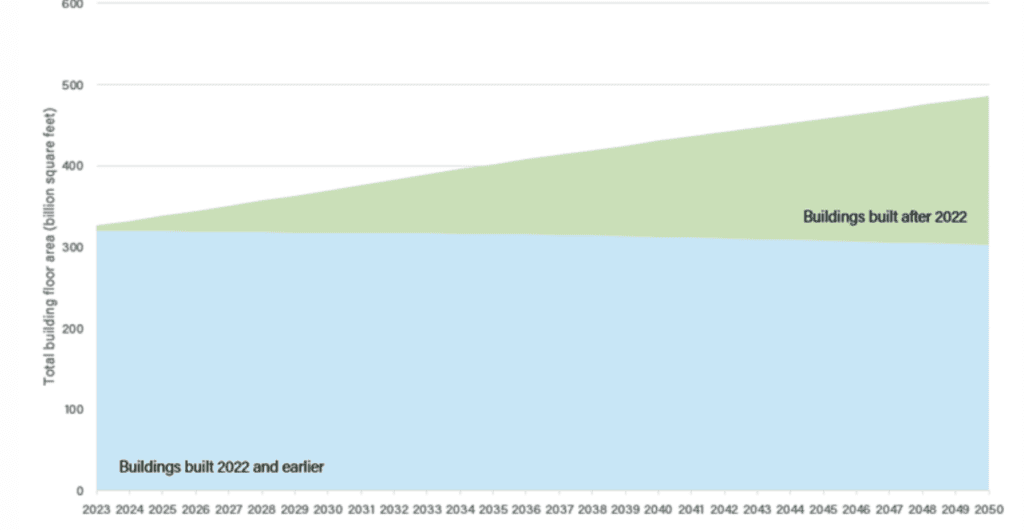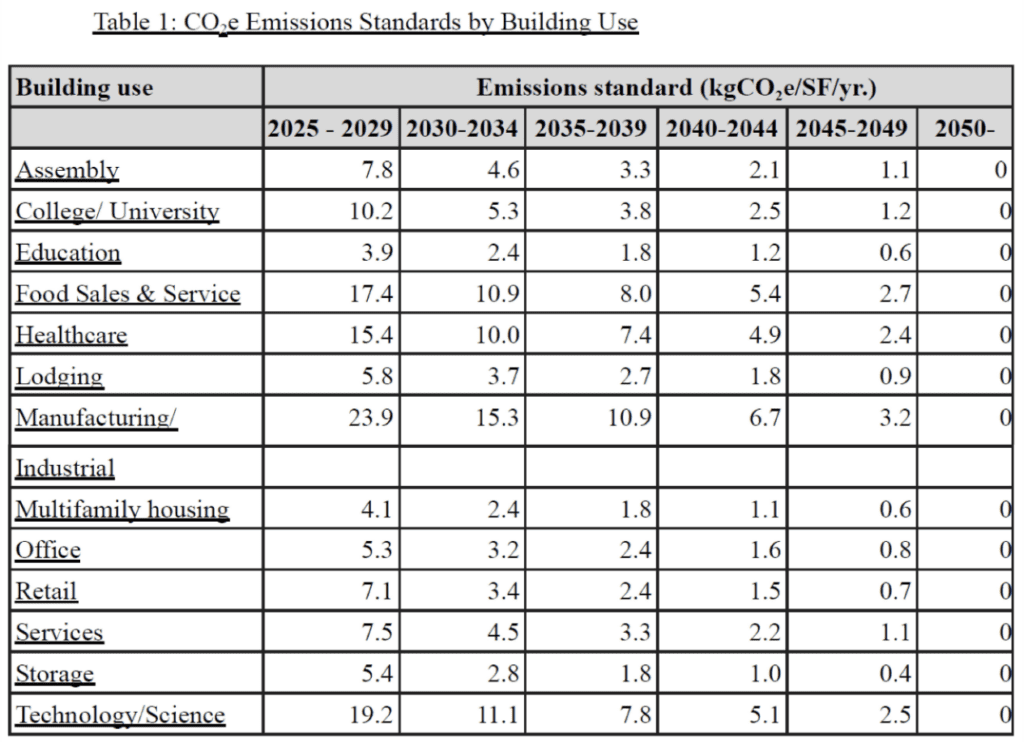Jun 12, 2023
The Energy Department Can Help Cities and States Steer Existing Buildings to Net Zero
Decarbonizing existing buildings will be challenging but necessary to meet the country's goal of net-zero greenhouse gas emissions by 2050.
By: Steven Nadel
The importance of updating existing buildings to reach decarbonization goals
In 2050, an estimated 62% of building floor area will be in buildings that were constructed in 2022 or earlier, as shown in the chart below. Thus, decarbonizing the buildings sector will not be possible without substantial programs and policies targeting existing buildings.

EIA AEO 2023.
Building performance standards: a possible path to net zero
Building performance standards (BPS) are mandatory requirements that existing buildings keep energy use or GHG emissions below a cap, with the cap usually varying by building type and tightening over time. At least 18 jurisdictions around the world have enacted a BPS, including 13 in the United States. Two U.S. jurisdictions—Maryland and Boston—have leading standards that will eventually ramp down to zero emissions (by 2040 in Maryland and 2050 in Boston). These cutting-edge policies provide examples of what DOE could help other jurisdictions achieve.
Boston’s ordinance, adopted in 2021, requires buildings to gradually reduce their emissions to zero, as shown in the table below. In Maryland, building performance must improve in two steps: first, a 20% reduction in net direct GHG emissions by 2030 (relative to average 2025 emissions for buildings of similar type) and then to zero by 2040. In both jurisdictions, the requirements apply to commercial and residential buildings above a size threshold. Specific requirements and flexible compliance pathways can be set in legislation and regulations. As an example of flexibility, Boston’s BPS includes alternative compliance payments of $234 per metric ton of carbon dioxide emissions over the standard for a building. The money goes into Boston’s Equitable Emissions Investment Fund to support local emissions reduction projects that prioritize environmental justice communities.

To meet these standards, building owners will need to employ a mix of energy efficiency and electrification while also counting on carbon-free electricity generation. Energy efficiency can often reduce energy use and emissions by 30% or more while making it easier and less expensive to electrify with renewable energy. The combination of electrification of major end-uses, such as space and water heating, and zero-carbon electricity can reduce emissions to near zero. Using biofuels and hydrogen is also an option but will be expensive.
Vancouver, British Columbia, has also adopted a BPS that ramps down to zero, and similar standards are pending in Seattle, Washington; Portland, Oregon; and Cambridge, Massachusetts. (A forthcoming ACEEE report will review the progress of BPS programs around the world.)
Federal funding available for zero-energy building codes
The new DOE Technical Assistance for Building Energy Codes program may be able to help other jurisdictions adopt and implement similar standards. Created by Section 50131 of the Inflation Reduction Act, the program provides $1 billion for DOE to operate a program for states and cities to advance the latest or zero-energy building codes. The program will provide grants to help states and localities adopt building codes that meet or exceed the 2021 International Energy Conservation Code for “new and renovated residential or commercial buildings.” Late last month, DOE issued a Request for Information asking for input on the program, including a section on existing building opportunities, including BPS. DOE asked five questions on the structure, timing, and impact of various approaches. DOE appears to be defining “code” to include BPS. Comments are due by April 26. After considering the responses, DOE will issue a Funding Opportunity Announcement under which states and local jurisdictions can apply for funding.
Achieving net-zero emissions by 2050 will require decarbonizing essentially all buildings, including those that exist today and will still exist in 2050. Because of the need to tackle emissions from both new and existing buildings, ACEEE will submit comments calling on DOE to ensure it uses the funding to support both stronger codes for new buildings and robust performance standards for existing buildings. We believe there is adequate funding to support policies for both new and existing buildings and that performance standards are a must because only a small number of existing buildings (primarily those undergoing a major renovation) will need to comply with codes for new buildings.
Boston, Maryland, and other jurisdictions provide proven models. Developing a BPS requires staff time and technical analysis, which DOE funding can help make possible as budgets tighten for many localities. The Biden administration can build on its support for BPS programs—and help achieve its own net-zero goal—by aiding cities and states pursuing BPS policies.
This article originally appeared in the ACEEE blog and is republished with permission.





